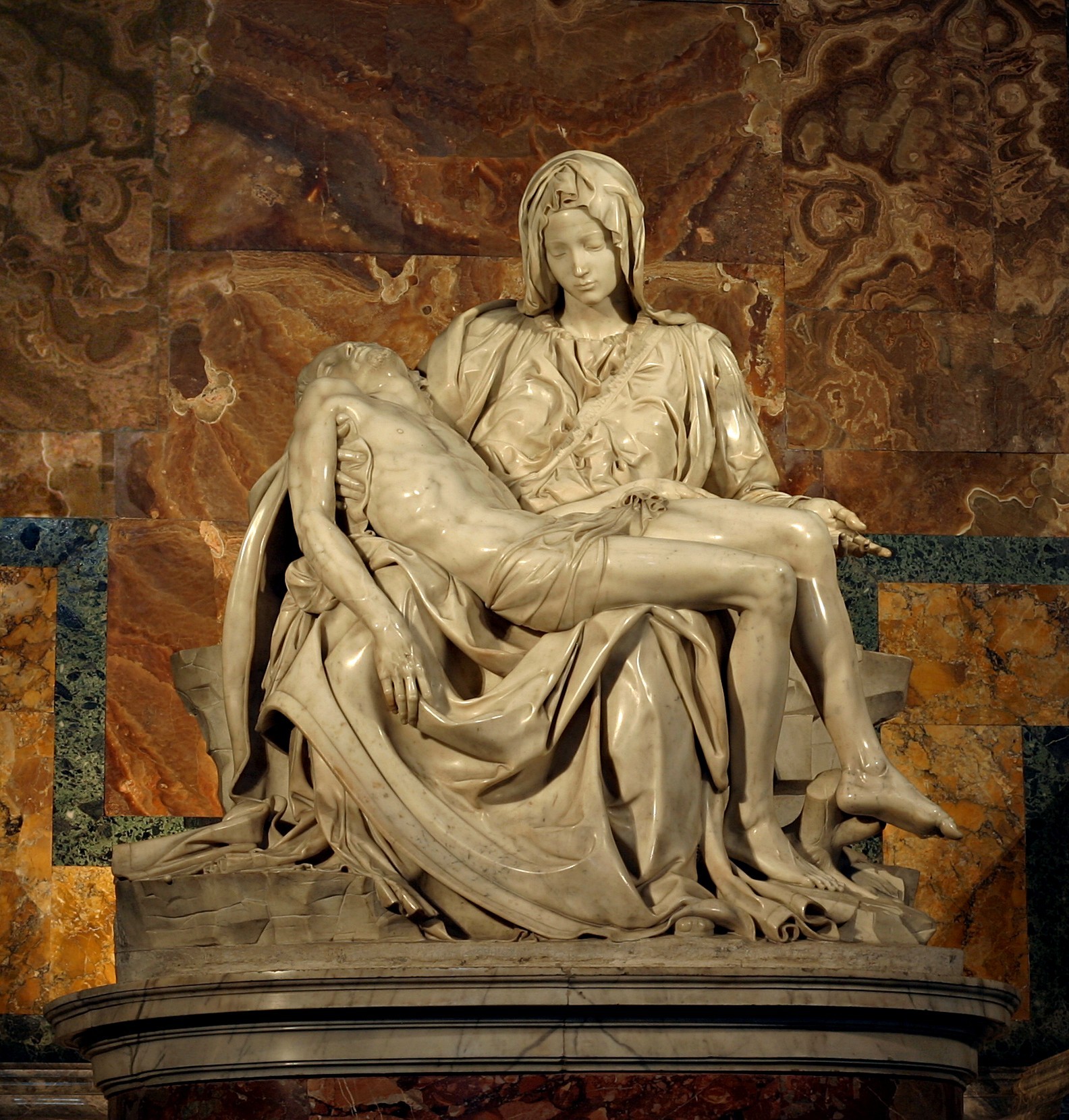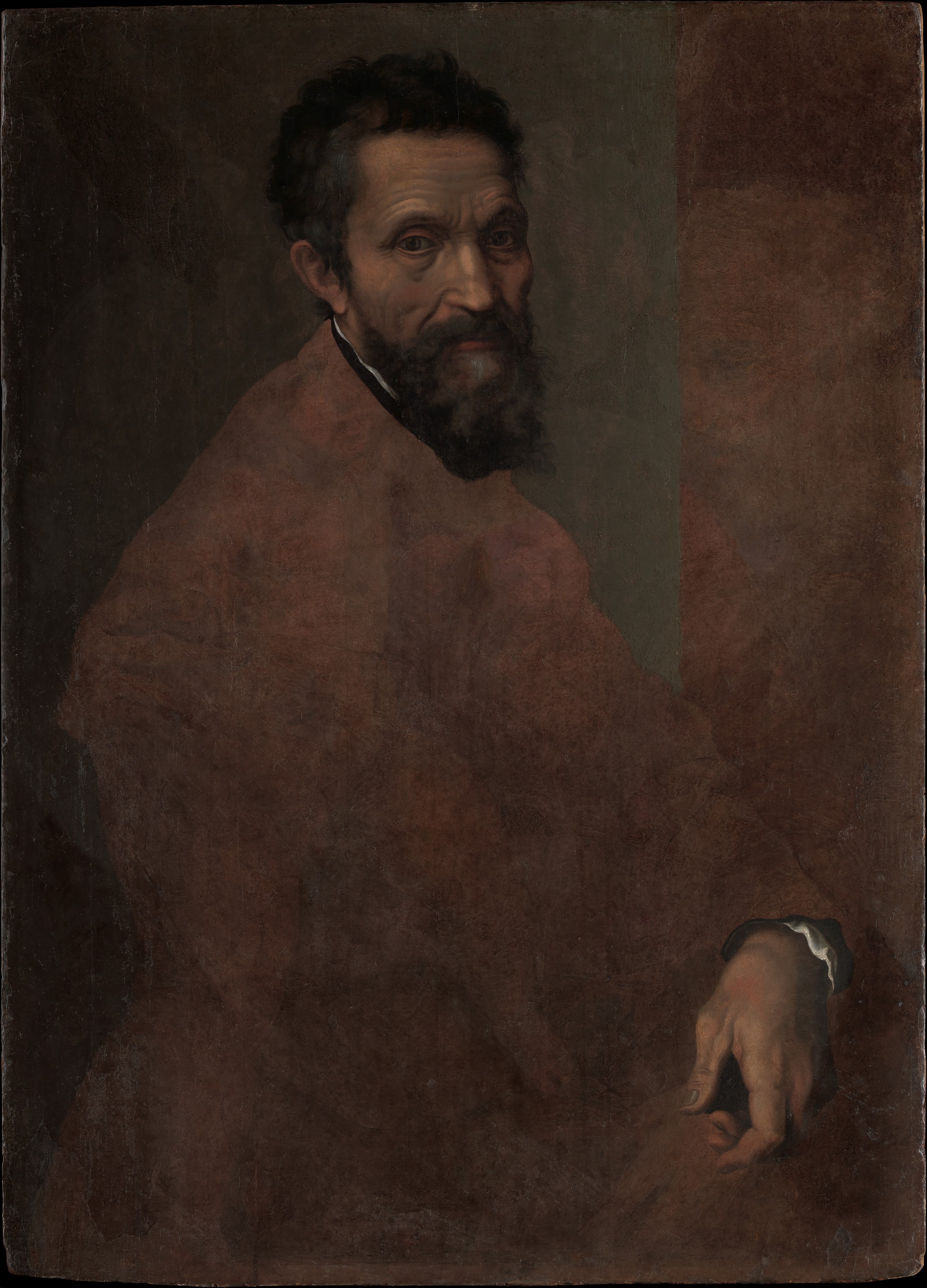The Pietà is a work of Renaissance sculpture by Michelangelo Buonarroti, housed in St. Peter's Basilica, Vatican City. It is the first of a number of works of the same theme by the artist. The statue was commissioned for the French Cardinal Jean de Bilhères, who was a representative in Rome. The sculpture, in Carrara marble, was made for the cardinal's funeral monument, but was moved to its current location, the first chapel on the right as one enters the basilica, in the 18th century. It is the only piece Michelangelo ever signed.
This famous work of art depicts the body of Jesus on the lap of his mother Mary after the Crucifixion. The theme is of Northern origin, popular by that time in France but not yet in Italy. Michelangelo's interpretation of the Pietà is unprecedented in Italian sculpture. It is an important work as it balances the Renaissance ideals of classical beauty with naturalism.
The Madonna is represented as being very young for the mother of a 33-year-old son, which is not uncommon in depictions of her at the time of the Passion of Christ. Various explanations have been suggested for this. One is that her youth symbolizes her incorruptible purity, as Michelangelo himself said to his biographer and fellow sculptor Ascanio Condivi: "Do you not know that chaste women stay fresh much more than those who are not chaste? How much more in the case of the Virgin, who had never experienced the least lascivious desire that might change her body?"
Another explanation suggests that Michelangelo's treatment of the subject was influenced by his passion for Dante's Divina Commedia; so well-acquainted was he with the work that when he went to Bologna he paid for hospitality by reciting verses from it. In Canto 33 of the Paradiso, Saint Bernard, in a prayer to the Virgin Mary, says "Vergine madre, figlia del tuo figlio" (Virgin mother, daughter of your son). This is said because, since Christ is one of the three figures of Trinity, Mary would be his daughter, but it is also she who bore him.




Pietà
marble • 174 cm × 195 cm
 Michelangelo
Michelangelo